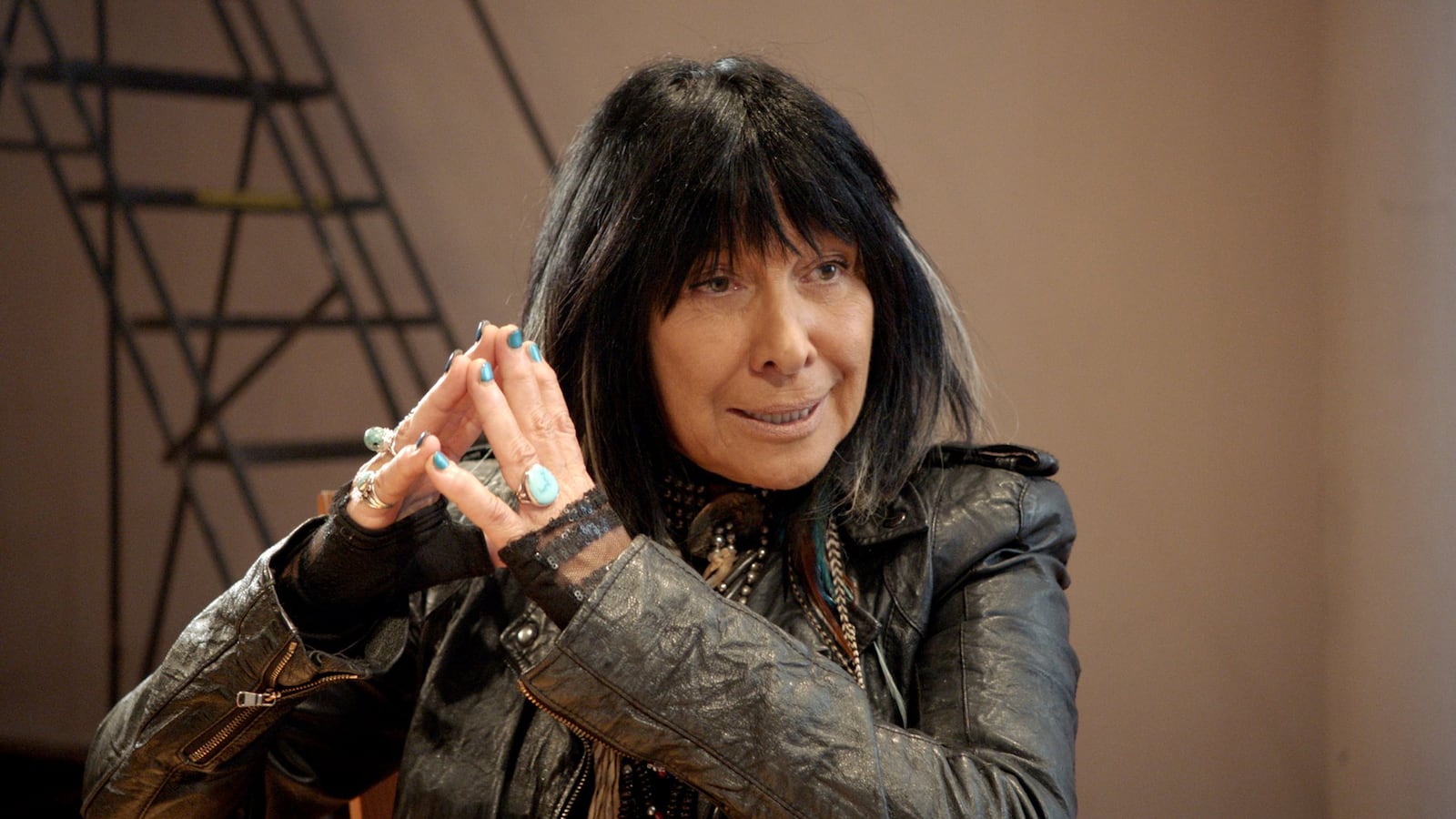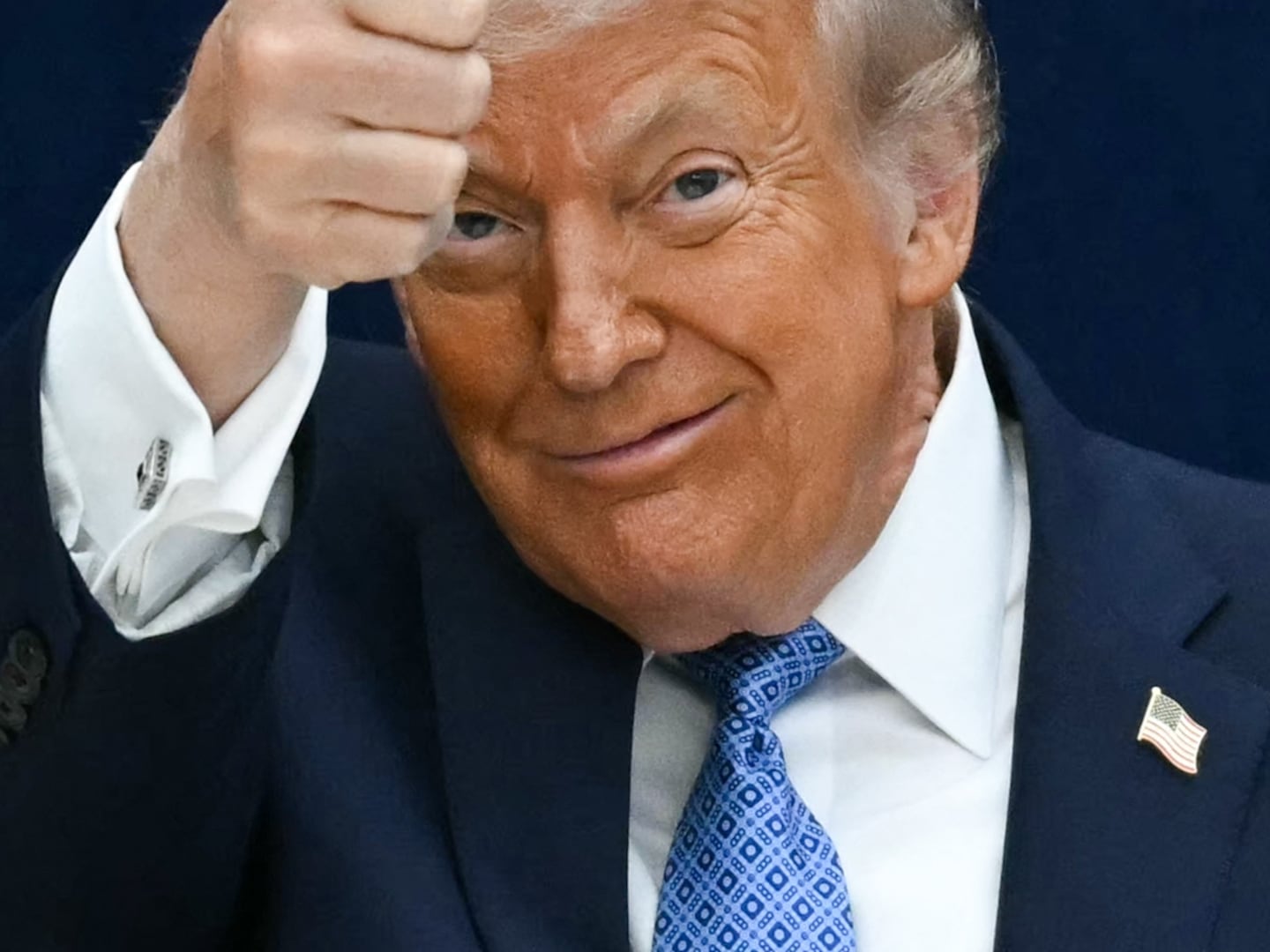There’s a video clip in the new documentary Rumble: The Indians Who Rocked the World, which neatly sums up what the film is all about. The Native American rock band Redbone, dressed in colorful tribal regalia, are performing their hit song “Come and Get Your Love” in a 1974 TV performance. Band member Tony Bellamy starts the number performing what’s known as a Fancy Dance, a Plains pow-wow tradition featuring chanting and fancy footwork. Then he sheds his feathered raiment, picks up an electric guitar, and the band charges into the song, which made it to No. 5 on the pop charts, and was recently featured in Guardians of the Galaxy.
It’s a truly thrilling multi-cultural experience. And as the documentary makes clear, Redbone, which included members of the Yaqui and Shoshone tribes, were not the only American Indians who played a key role in the gumbo that makes up American pop culture.

“American Indians pose a challenge to what we typically see as rock history, which has been very black and white,” says John Troutman, music curator at the National Museum of American History in Washington, D.C., who is interviewed in the film. “Rock and roll is filled with people from a range of backgrounds, and when you speak to musicians, they are all totally aware of it. But nobody had come together to reveal the extent of their [American Indians] participation in the music.”
“Native Americans were willfully segregated out of society as soon as the white man got here,” adds Rolling Stone writer David Fricke, also interviewed in the film, explaining their absence from rock history. “They were not part of the narrative anymore.”
Rumble, which won a special jury prize at this year’s Sundance Film Festival, opens in New York on July 26th followed by a national rollout, and is the brainchild of Stevie Salas, an Apache guitarist who has played with Rod Stewart, George Clinton, Bootsy Collins, Eddie Money and many others. Salas, who is executive producer of Rumble (the film was directed by Catherine Bainbridge), says he first realized there were other Indians in rock when he started playing for Stewart in the 1980s, but it wasn’t until the early years of this century that he fully realized their influence. That’s when he found out about Link Wray, a Shawnee whose 1958 instrumental hit “Rumble” introduced the power chord to rock and roll.
“That’s when my brain exploded,” says Salas, “because Native American people don’t have any role models. Nobody wanted to be Native American. It was something we would keep to ourselves, something we didn’t talk about. There were Native Americans doing these things back then, but no one saw them.”
Salas took this newfound knowledge and helped create “Up Where We Belong: Native Musicians in Popular Culture,” a 2010-2011 exhibit at the National Museum of the American Indian. “And that’s when I said I have to get someone to make a film,” he says.
Beginning with the influence Link Wray’s recording had on other rockers—“‘Rumble’ had the power to push me over the edge,” says Iggy Pop in the film—the documentary provides a short course on the subjugation of Native American culture, how it survived, and how so many musicians with Native American blood absorbed, and contributed to, our country’s pop music. They’re all here: bluesmen Charley Patton (Cherokee) and Howlin’ Wolf (Choctaw), 1930s jazz singer Mildred Bailey (Cour D’Alene), folk singer Buffy Sainte Marie (Cree), Jimi Hendrix (part Cherokee), Robbie Robertson (Mohawk), Taboo of the Black Eyed Peas (Shoshone), Jesse Ed Davis (a Kiowa who performed the guitar solo on Jackson Browne’s “Doctor My Eyes” in one take) and more.
This contribution is even more astonishing because starting in the late 19th century, the American government did its best to wipe out Indian culture. Troutman mentions an “assimilation campaign” which essentially banned Native dances and music because they “seemed so foreign to white Americans” and were “problematic [because] they perpetuated tribal traditions. In large part, these government officials felt they could assert management over the lives of these people in every way possible.”
Salas adds that some of this was also fear of Native cultures, because “in the early days, how they would gather, and build up for war, was using the drums. That’s how they communicated. They were trying to stop the communication, the uprising.”
Ironically, drumming is one of the American Indians’ most significant contributions to rock and pop. For example, Rumble features an extended sequence about Randie Castillo, an Apache who worked with Ozzy Osbourne and is widely regarded as one of heavy metal’s greatest drummers. Salas says if you “take that Native American four on the floor and mix it with African polyrhythm, you have some funky blues going on. There’s just something about the Indian rhythms.”
But, says Fricke, “it’s not necessarily that there is a Native American quality in rock and roll. What you’re looking at is a hidden portion of the American population that is making quantitative and qualitative strides. When you come to someone like Link Wray, he not only invented the power chord, but wrote the song that popularized it. It’s that a Native American had a thoroughly original idea, and that became the essence of a much wider thing.
Adds Troutman: “It’s difficult to say there is this Indian sound. It’s important to consider individual contributions. Let’s realize there is this other element here that is operating, that they are experiencing their lives in other capacities, but also totally involved in popular culture.”
Salas says he wanted to make a film about the American Indian contribution to rock because “I didn’t want to make another victim film, I wanted to make a movie about people doing positive things. We are telling untold history that is now out of the box, so when you talk about pop music history, we are part of the story, in a legitimate way.”
Or, when asked what viewers should take away from Rumble after seeing it, Troutman puts it quite succinctly: “Prepare to have your expectations totally shattered about the history of the music that you love.”






